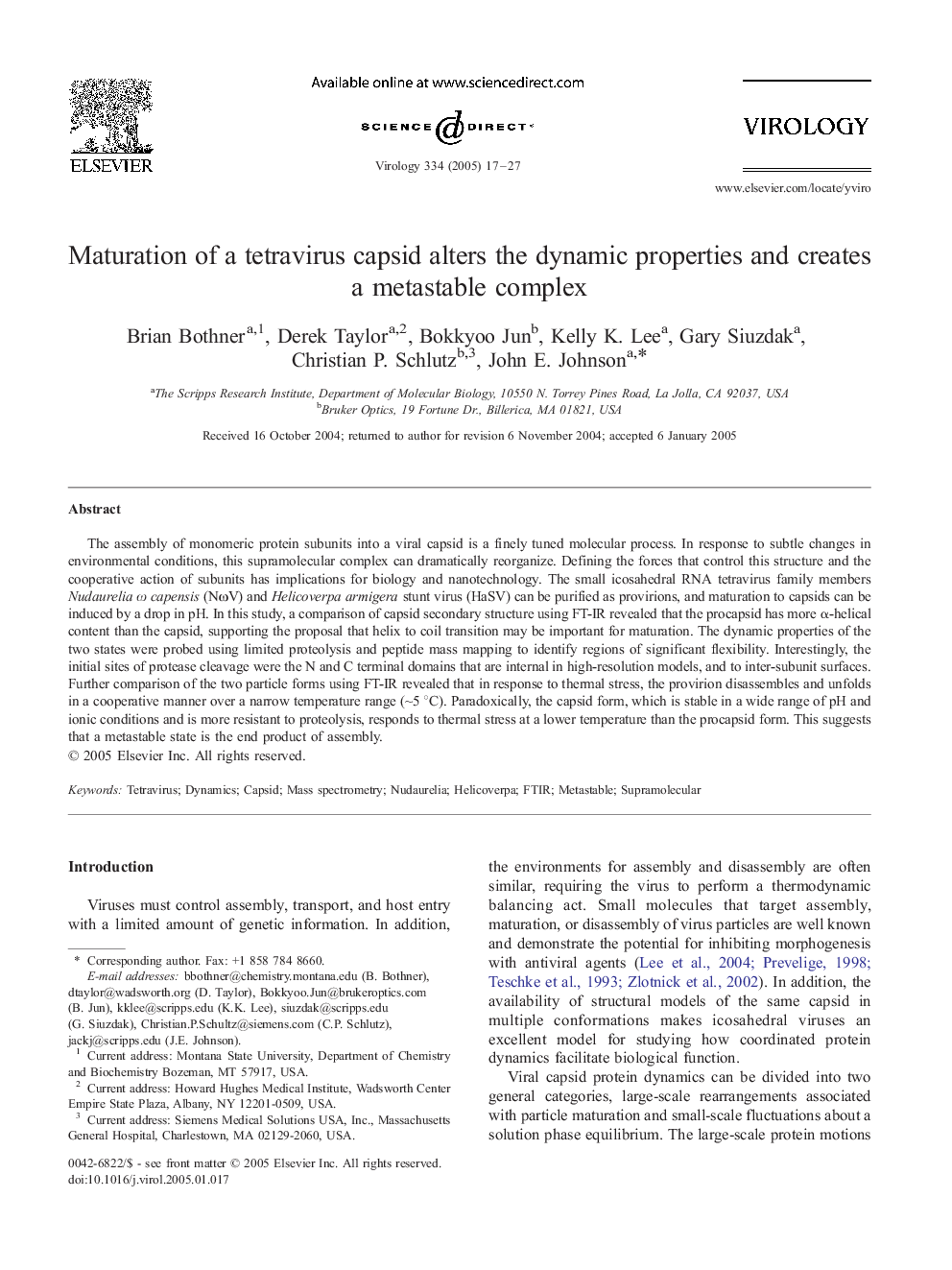| کد مقاله | کد نشریه | سال انتشار | مقاله انگلیسی | نسخه تمام متن |
|---|---|---|---|---|
| 9287060 | 1227392 | 2005 | 11 صفحه PDF | دانلود رایگان |
عنوان انگلیسی مقاله ISI
Maturation of a tetravirus capsid alters the dynamic properties and creates a metastable complex
دانلود مقاله + سفارش ترجمه
دانلود مقاله ISI انگلیسی
رایگان برای ایرانیان
کلمات کلیدی
موضوعات مرتبط
علوم زیستی و بیوفناوری
ایمنی شناسی و میکروب شناسی
ویروس شناسی
پیش نمایش صفحه اول مقاله

چکیده انگلیسی
The assembly of monomeric protein subunits into a viral capsid is a finely tuned molecular process. In response to subtle changes in environmental conditions, this supramolecular complex can dramatically reorganize. Defining the forces that control this structure and the cooperative action of subunits has implications for biology and nanotechnology. The small icosahedral RNA tetravirus family members Nudaurelia Ï capensis (NÏV) and Helicoverpa armigera stunt virus (HaSV) can be purified as provirions, and maturation to capsids can be induced by a drop in pH. In this study, a comparison of capsid secondary structure using FT-IR revealed that the procapsid has more α-helical content than the capsid, supporting the proposal that helix to coil transition may be important for maturation. The dynamic properties of the two states were probed using limited proteolysis and peptide mass mapping to identify regions of significant flexibility. Interestingly, the initial sites of protease cleavage were the N and C terminal domains that are internal in high-resolution models, and to inter-subunit surfaces. Further comparison of the two particle forms using FT-IR revealed that in response to thermal stress, the provirion disassembles and unfolds in a cooperative manner over a narrow temperature range (â¼5 °C). Paradoxically, the capsid form, which is stable in a wide range of pH and ionic conditions and is more resistant to proteolysis, responds to thermal stress at a lower temperature than the procapsid form. This suggests that a metastable state is the end product of assembly.
ناشر
Database: Elsevier - ScienceDirect (ساینس دایرکت)
Journal: Virology - Volume 334, Issue 1, 30 March 2005, Pages 17-27
Journal: Virology - Volume 334, Issue 1, 30 March 2005, Pages 17-27
نویسندگان
Brian Bothner, Derek Taylor, Bokkyoo Jun, Kelly K. Lee, Gary Siuzdak, Christian P. Schlutz, John E. Johnson,